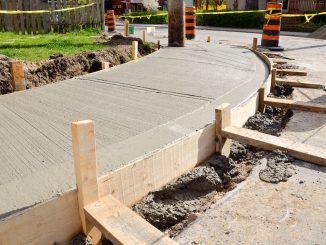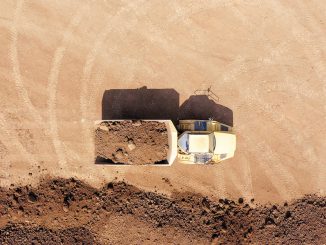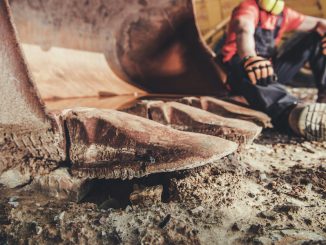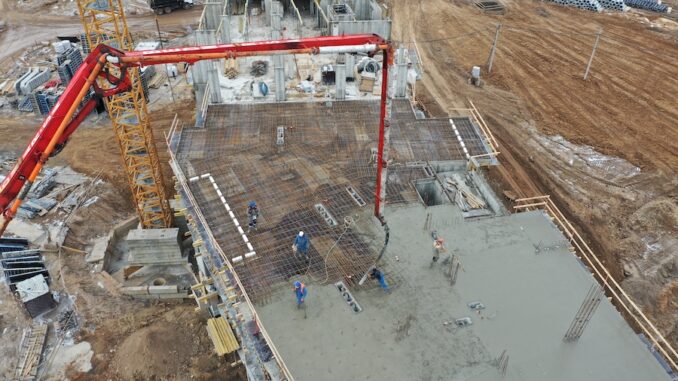
View the complete article here.
Concrete pumps are an essential piece of equipment in the construction industry—providing a versatile and efficient way to transport and place concrete. They have revolutionized the way concrete is placed and have become a vital tool for modern construction projects. This comprehensive guide will cover everything you need to know about concrete pumps—from pump selection and applications to their usage, safety, and more.
Types of Concrete Pumps
There are two main types of concrete pumps—boom pumps and line pumps.
Boom Pumps
Boom pumps consist of a truck-mounted pump with a hydraulic boom that extends and articulates—allowing it to reach heights and depths that other pumps cannot. Boom pumps are ideal for large-scale construction projects where concrete needs to be placed at great heights or depths—such as high-rise buildings or bridges.
Line Pumps
Also known as trailer or stationary pumps, line pumps are more compact and versatile than boom pumps. They use flexible hoses or pipes to transport concrete from the pump to the desired location. Line pumps are perfect for smaller projects or tight spaces where a boom pump may not be practical.
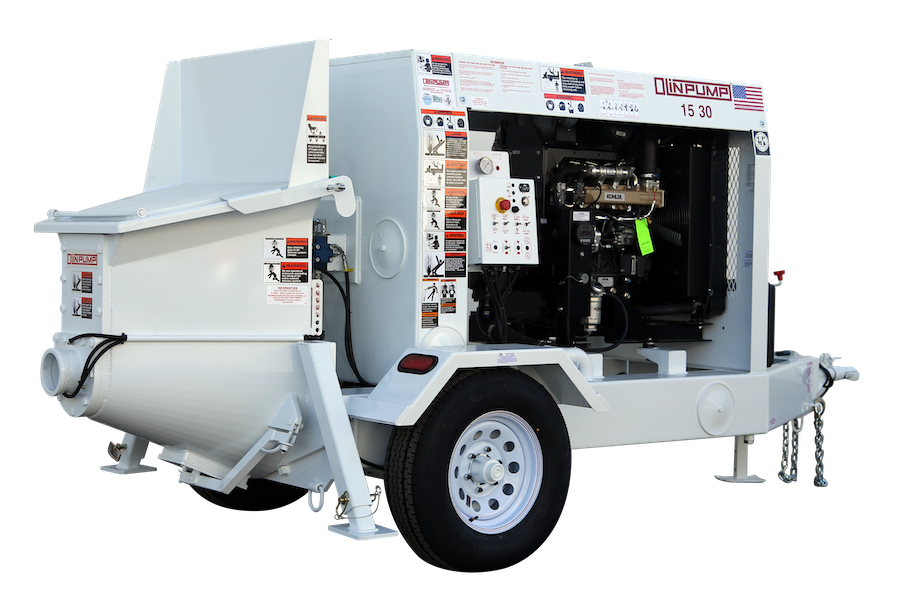
Pump Selection
When selecting a concrete pump, consider the following factors:
- Project size: The scale of the project will determine whether a boom pump or a line pump is more suitable.
- Pumping distance and elevation: The horizontal and vertical distance the concrete must be pumped will affect the pump selection—as different pumps have varying capacities.
- Concrete mix design: Different pumps handle different types of concrete mixes. Be sure the pump you select can handle the specific mix design required for your project.
- Availability and budget: Consider the availability of the pump type you need and the budget for your project.
Applications
Concrete pumps are used in a variety of construction applications, including:
- High-rise buildings: Boom pumps are ideal for placing concrete at great heights.
- Infrastructure projects: Both boom and line pumps can be used for projects like bridges, tunnels, and dams.
- Residential construction: Line pumps are suitable for smaller-scale projects, such as homes and low-rise buildings.
- Slabs and foundations: Both types of pumps can be used to place concrete for slabs and foundations.
- Restricted access areas: Line pumps are perfect for tight spaces where boom pumps may not be practical.
How to Use a Concrete Pump
Operating a concrete pump involves several steps:
- Site preparation: Ensure the pump has a solid, level surface to set up on and that the area is clear of any obstructions.
- Pump setup: Follow the manufacturer’s guidelines to set up the pump correctly.
- Priming: Prime the pump by pumping a slurry mix through the system before pumping concrete.
- Pumping: Monitor the pump operation and adjust the pumping speed as needed.
- Cleanup: Properly clean the pump after use to prevent concrete buildup and maintain its efficiency.
Safety Considerations
To ensure the safe operation of concrete pumps, follow these safety guidelines:
- Training: Only trained and certified operators should operate a concrete pump.
- Personal Protective Equipment (PPE): Operators should wear appropriate PPE, including safety goggles, gloves, and steel-toed boots.
- Regular inspections: Inspect the pump regularly to ensure all components are in good working order.
- Communication: Maintain clear communication with the entire crew during pumping operations.
- Establish a safe work zone: Set up barriers and warning signs around the pump to keep unauthorized personnel away.
Conclusion
Concrete pumps are a critical component in modern construction projects—offering efficiency, versatility, and precision in concrete placement. By understanding the different types of concrete pumps, their applications, and proper usage, you can select the right pump for your project and ensure its safe and efficient operation. Not sure where to begin? Check out OlinPump.
View the complete article here.
What are concrete pumps?
Concrete pumps are machines used to transfer liquid concrete by pumping. They are an integral part of any construction project that requires large amounts of concrete, particularly in areas that are difficult to reach with traditional methods. They can significantly reduce labor costs, increase efficiency, and improve the quality of the concrete pour.
What are the types of concrete pumps?
There are two main types of concrete pumps: boom pumps and line pumps. Boom pumps use a robotic arm (boom) to deliver concrete accurately to the location. They are commonly used in large construction projects. Line pumps, on the other hand, are more compact and use flexible or steel hoses attached to the outlet of the pump. They are suitable for smaller projects like swimming pools, sidewalks, and ground slabs.






































